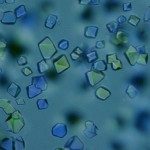Link to Pubmed [PMID] – 19857576
J. Struct. Biol. 2010 Mar;169(3):360-9
Ammodytoxin A (AtxA) and its natural isoform AtxC from the venom of Vipera ammodytes ammodytes belong to group IIA-secreted phospholipases A(2) which catalyze the hydrolysis of glycerophospholipids and exhibit strong neurotoxic and anticoagulant effects. The two isoforms, which differ in sequence by only two amino acid residues (Phe124>Ile and Lys128>Glu), display significant differences in toxicity and anticoagulant properties and act on protein targets including neurotoxic proteic receptors and coagulation factor Xa with significantly different strengths of binding. In order to characterize the structural basis of these functional differences, we have determined the crystal structures of the two isoforms. Comparison of the structures shows that the mutation Lys128>Glu in AtxC could perturb interactions with FXa, resulting in lower anticoagulant activity, since the side chain of Glu128 is partly buried, making a stabilizing hydrogen bond with the main-chain nitrogen atom of residue Thr35. This interaction leads to a displacement of the main polypeptide chain at positions 127 and 128 (identified by mutagenesis as important for interaction with FXa), and a different orientation of the side chain of unmutated Lys127. The mutation Phe124>Ile in AtxC induces no significant conformational changes, suggesting that the differences in toxicity of the two isoforms are due essentially to differences in surface complementarity in the interaction of the toxin with the neurotoxic protein receptor. The crystal structures also reveal a novel dimeric quaternary association involving significant hydrophobic interactions between the N-terminal alpha-helices of two molecules of ammodytoxin related by crystallographic symmetry. Interactions at the dimer interface include important contributions from Met7, which is unique to ammodytoxin. Equilibrium sedimentation experiments are consistent with the crystallographic model. Competition experiments using SPR technology show complete inhibition of AtxA binding to FXa by calmodulin (CaM). The crystal structure shows that the C-terminal region, important for binding to FXa and CaM, is fully exposed and accessible for interaction with proteic receptors in both the monomeric and dimeric forms of ammodytoxin described here.



